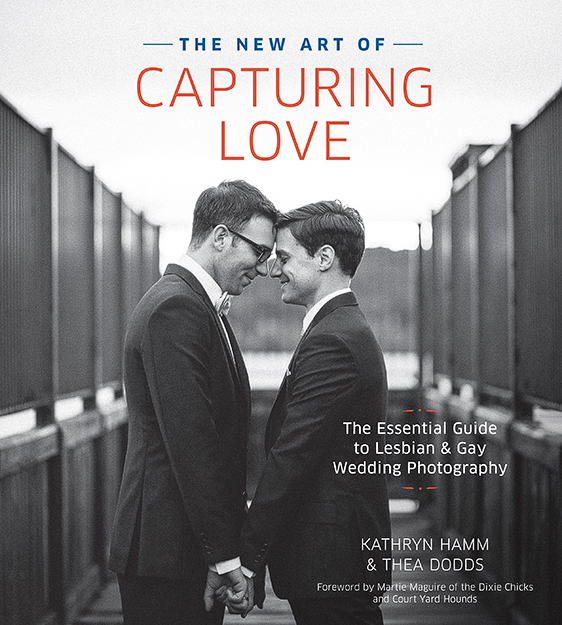 Capturing Love is “the essential guide to gay and lesbian wedding photography” by Katherine Hamm & Thea Dodds. Published earlier this year in May 2014, it’s almost less about how to shoot what is different at gay and lesbian weddings, and more about how the photographer can become more open minded. If a photographer sought open mindedness in general, I think this book would be mostly unnecessary.
Capturing Love is “the essential guide to gay and lesbian wedding photography” by Katherine Hamm & Thea Dodds. Published earlier this year in May 2014, it’s almost less about how to shoot what is different at gay and lesbian weddings, and more about how the photographer can become more open minded. If a photographer sought open mindedness in general, I think this book would be mostly unnecessary.
I’ve shot hundreds of heterosexual weddings so far in my career and I can honestly say, Capturing Love overstates of the variation on the differences between the actual shooting of same-sex weddings. Like the difference between shooting the county fair and the renaissance festival. They have really different elements, but the mechanics are very much the same.
The biggest difference, as the book rightly points out, is in people’s individual sensitivities. For example, it’s generally safe to assume that a straight bride is excited about her parents being at her wedding. It’s not so safe to assume the same thing about a gay groom or a lesbian bride. Gay couples expect different things based on where they were raised and the political climate around homosexuality there. This often creates sensitivity around things like gender roles and traditional family ties. These are all things the photographer finds out by getting to know the client, and there aren’t shortcuts based on gender assumptions.
Sensitivities are the most important difference between heterosexual and homosexual couples when it comes to photographing their wedding. And there’s nowhere that a couple’s sensitivities come more to the forefront than while being poses for formals. For photographers who haven’t been working with same sex couples, they might not notice how deeply embedded gender roles are when posing their subjects. And they might not know how many assumptions they’re make based on a person’s gender. Many gay men and women will be quick to point out that their gender, in and of itself, should not be treated as a predictor of the things they will like, or do, or feel. I concur.
The authors did a fairly good job covering the practical differences in posing while remaining remaining conscious of other people’s unique sensitivities. They argue that body type should be the basis of posing, rather than gender roles. But, I can honestly say this is what I do with all the couples I photograph. If I’m photographing a man and a woman, and one of them is significantly taller, the taller one–regardless of gender–is going to get leaned on by the shorter one a lot.
While I appreciated the notion and like that there are people out there who are beginning to consider the thoughts and feelings and needs of gay men and women, ultimately, I found the book sparse. The best information likely could have been a long article online. The principle that seems to inform all the rest is this: Know your client. Realistically, gay couples are having weddings and the moving parts of those weddings aren’t really all that different from any other wedding. But the feelings, expectations and needs of the people are very different. Photographers who have started to run on autopilot with their clients aren’t suited to serve gay couples yet.
My take away
The gay couples usually don’t follow quite the same template that photographers have learned to follow almost automatically. Photographers have to toss out interpersonal assumptions, and seek answers to questions that are no-brainers for more traditional couples. But ultimately, if a photographer knows their client and cares about their client, they’re not going have trouble working with a gay or lesbian client either.

Recent Discussion